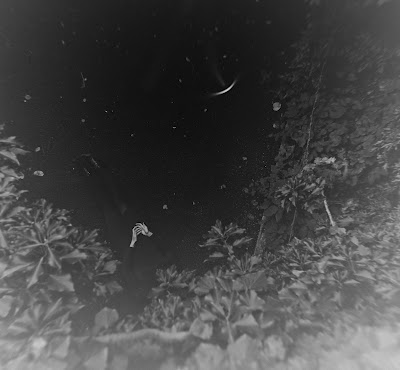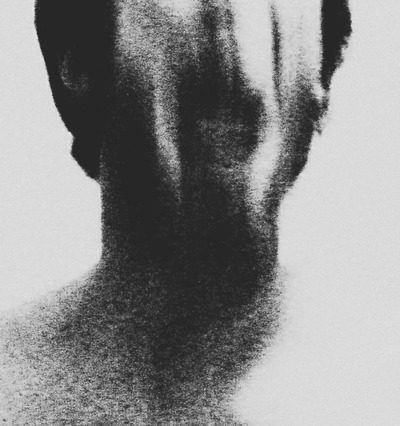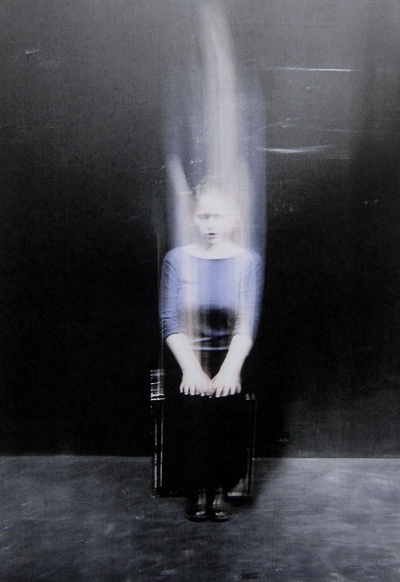Notes from a four-part Pranayama workshop held in February 2012 at the Centre of Gravity. Led by Michael Stone and Grant Hutchinson.
Pattabhi Jois said that pranayama practice was like plugging yourself in to a 12,000 volt outlet. Some confuse the endorphin rush of extended inhales and exhales with what should really be going on: ease and pleasure.
The best part about chanting is not chanting. The afterglow, the clean taste in the palette when it’s finished.
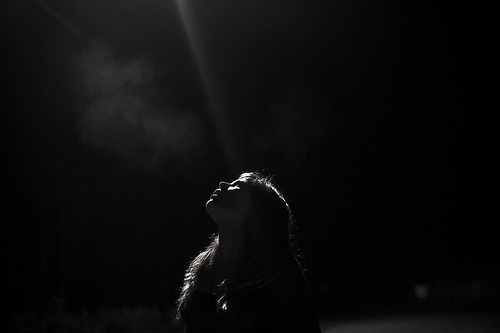
Ujayyi Pranayama
Pranayama means the energy of prana. We’re ayaming (unrestraining) the prana. Ujayyi means victorious, and up. We’re stretching the threads of the breath to release the prana.
The inhale and exhale are conditioned by samskaras – your scars of gender, culture, Stephen Harper, childhood, the Keystone XL Pipeline proposal. All this can be found in your breath. Doing pranayama means becoming a connoisseur of the breath. Inside the breath there are gravestones, habits, flows of the past, nervous system indicators/regulators, immune system indicators/regulators. We practice to comb through all the layers of the prana.
Inhaling and exhaling through the nose tones the glottis. Try to produce just enough tone in the vocal diaphragm so you can hear an aspirant breath, but so your neighbour can’t hear it. It’s like when you’re whispering – then you are also toning the vocal diaphragm. We are stretching the length of the breath so that the inhale and exhale are the same length. We’re engaging the vocal cords so that there’s just enough sound so that we can pay attention to it, just enough tone so that the sinuses amplify sound to the inner ear, and this feels really good.
We sit with the nose over the navel, eyelids shut, the eyes sinking into the cheekbones. If you eyes are open keep a wide, soft and receptive gaze, about five feet in front of you. We’re inhaling to the top of the inhale, exhaling to the bottom of the exhale. The vocal cords are toned so that as the breath passes through the vocal cords you can hear it. The citta (or consciousness) yolks itself to the sound of the breath. Instead of wandering off into great distances the mind comes back to this sound. Deep practice is listening and feeling.
The root of the tongue drops and widens. The tongue releases from the root to the tip and this releases the language function. You do this by smiling. When the corners of your lips lift the root of the tongue drops and widens automatically. Then you have the same lips as Ganesh. Notice how you can use this inhaling pattern to keep the tongue soft (and hence to keep the mind from sticking to language). As soon as you get distracted the first thing to go is the smile.
If you lift the chin a little, you can feel while inhaling the base of the tongue drops and the soft palette (on the roof of the mouth) lifts and spreads. This is a mirror of what happens in the pelvic floor at the bottom of the exhale. This is called shambhavi mudra. Sham is ease, bhava is to be. A mudra is a gesture or seal. Shambhavi mudra is the gesture of ease.
At the top of the inhale, you draw the breath up the central axis (runs from the perineum to the crown of the head) to the pituitary gland. If you don’t release the soft palette your throat gets tight and then you get competitive. When the soft palette lifts the sinuses sparkle all the way up to the forehead, then exhale without losing that pattern in the tongue.
This is the path of sham – the path of letting go. Releasing the soft palette is the physiology of letting go.
At the end of the exhale, if it’s a challenge, if you can’t keep your tongue still, then you’re working too hard. Keep the wonder, the astonishment, right to the end of the exhale. There are two pleasures cultivated in Ujayyi Pranayama: the smile of the tongue, and the lifting of the soft palette. Both are necessary, necessary pleasures.

Mula Bandha
Mount Meru in India is a commonplace in Indian folklore, not least because it seems to be standing upside down. Its apex seems to be on the ground, while its broad base appears on top. This mountain is a metaphor for the body, and more specifically, for the relation between the groins and the mula (root) bandha (bond). We have a mountain inside us, Mount Meru, and at the base of this mountain is the mula bandha, the root wheel. It is a diaphragm at the root place.
In order to feel mula bandha breathing, it’s necessary not to squeeze the anus or the “pee pee” muscle. Pee pee is a technical term that we’ll try not to use too often here. Squeezing these muscles make it impossible to achieve a full inhale. In order to feel mula bandha breath: no squeezing, tightening or locking.
Instead, try this posture: bend the knees into a deep crouch, and bring your hands to your knees keeping your arms straight and elbows locked. Follow the end of the exhale and bond attention with the feeling tone at the end of the exhale. Imagine the breath as a brush dipped in ink which paints the pelvic floor.
There are two triangles of muscle that form the pelvic floor. The perineum is at the centre. The perineum is the spot where all the fascia (an uninterrupted web of tissue that interpenetrates and surrounds muscles, bones, organs, nerves, blood vessels) begin. It is the band of tissue between vagina and anus in women, anus and scrotum in men.
What shape does the pelvic floor take at the end of the exhale? It seems to widen, but the centre of it lifts, as if you could take a rubber membrane, stretch it from all sides (widening the pelvic floor), and then pinch its centre and draw it upwards. At the end of the exhale you want to keep some of that lift, because it creates a vacuum. The breath is drawn or vacuumed up the central column of the spine from the mula bandha. If you light a flame on a wood stove it creates an up draft. The same principle applies. This breath creates a vacuum at the base of the body, then this heat is drawn up the central axis, through the heart, and up through the top of the mouth, which is a mirror of the pelvic floor. The response of that lift occurs in the roof of the mouth. Perhaps one could imagine the mouth response as sucking on a nipple filled with milk. Or drawing on a cigarette. The tip of the tongue seals the mouth, and rests behind the top front two teeth.
The pubic bone and tail bones draw together, the belly smiles, and all of the spirals and counter spirals of the arms and legs are devotions to the guru of gravity that is the central axis of your own body. Pattabhi Jois once said that the pelvic floor and the roof of the mouth are two ends of a flute. The central axis is the blue flute.

The Gutter of the Body
The pelvic floor and the roof of the mouth are mirrors of one another. The hollow roof of the mouth at the top of exhale releases the tongue. You want to keep that release right down to the bottom of the breath into the pelvic floor. A released tongue ensures spaciousness. There is a deep (physical and ontological) letting go. You can’t pay attention to the end of the exhale and have thoughts. The idle distractions, the dizzying word solos and bent rumours, all that doesn’t appear until the inhale.
How can I be here for what’s going on now? How can I bond attention with whatever I’m feeling? The invitation is to stay with the exhale right down to its end. This kind of breathing is like making a pilgrimage to our own pelvic floor.
Take the feeling tone at the bottom of the exhale and bring it up inside the body. This occurs above the perineum, in front of the sacrum. There is a space, a tone… whatever you feel there can be drawn up the central axis. Sweep awareness off the pelvic floor. This is where you make contact with emotion and old pollutions. The pelvis is like a gutter filled with the runoff of your life. The exhale runs down into your pelvis, scrapes up the residue (like an ice cream scooper) and draws it up to the heart and then releases it into the world. Whatever doesn’t release into the world is left as an afterglow on the tongue. What a bittersweet practice.
Feelings Without Language
At the end of the exhale there’s a feeling tone of the pelvic floor. This floor is where we keep most emotions and feeling systems. The citta (consciousness) is programmed to escape this place as soon as possible. In our culture, if you can feel anything below your nose, it’s a miracle. The story maker wants to engage, to fill our existential void, to project the self again and again. Thoughts begin with inhaling, and typically end while exhaling. But at the very end of the exhale, the story teller can’t go meta. It can’t create a context, or a frame to place experience into. The ego hates this feeling place. The ego is developed through a series of traumas, like the trauma of feelings waiting on the pelvic floor. The invitation is to bond our attention down to the end of the exhale so that we can feel what is there, though these are not feelings like sadness or depression, instead, they are pre-verbal, ancient feelings. Feelings without language.
The pelvic floor is the place where citta (consciousness) and the vayus (winds) are bonded. It’s the place where the attention span and the vayus are bonded. But there’s no bonding unless there’s a feeling tone of breath.
Toxic Certainties
The Yoga Pradipika advises: “Avoid contracting throat, contact of tongue on the front teeth is proper.” It’s impossible to contract the throat and keep the tongue in contact with your front teeth at the same time. The nadis stop if the tongue is pressed into the roof of the mouth. If one is practicing well, one is “clever in loosening the great noose of the rope of time.” When you’re fully in practice, there is a sense of time dissolving. When the mind is not taking up space in the vertical air column, our sense of time is not constructed with it. The mula bandha is responsible for time. The pelvic diaphragm is like a mouth opening and swallowing the hours. When you finish an exhale there is a pause, in which the perineum grabs time and suspends it. There is no time, only what you are feeling at this moment. How can we keep our central column clear of toxic certainties, our opinions and points of view?
Right above the kidneys is a thought balloon, and the corner of that balloon, the one that usually angles towards a cartoon character’s face, pokes into the kidneys. It’s important to take all the thoughts you’ve gathered during the inhale and spread them throughout the kidneys on the exhale so they don’t get up into your eyes. The assertions, the knowing, the understanding. Why not return to beginner’s mind?
The storyteller wants to stay in the superficial body: the skin, the bones and muscles, instead of the subtle body, that we can feel but can’t see. The pelvic floor, on the other hand, delivers us to the importance of the metaphoric. Howard Nemiroff was a birder and poet, and one morning excitedly spotted a bird he’d never seen before. Locating a corresponding picture in his aviary dictionary, he found the following entry. “A red finch looks like a small bird dipped in raspberry juice.” The poem he wrote about his dipped bird observations narrates his discovery that metaphor is the only way to truly understand the world.
The subtle body can’t be found on MRIs, but it’s where visualization comes from, and pictures.
Psoas Nostrils
Find a spot four fingers below the navel, then take your fingers out to the side, then down two finger lengths. More or less. Your two fingers will arrive at the psoas nostrils, the top two points of a triangle that form the deep groins. The top two points of Mount Meru. This is where one can inhale from during asana practice. Inhale from the psoas nostrils, then exhale through the mula bhanda. Inhaling through the psoas nostrils takes awareness away from the nose and the face, which we often mistake as the place of our “real” identity. The nose is also the ego. The promontory, the jutting forward, the self assertion. Every time I touch my nose I feel so inflated. The ski slope of the self. Breathing through the psoas nostrils is a way to give that ego a rest, and keep awareness down in the pelvic floor, which means that all the muscles around the nose are at ease.
Breath in through the psoas nostrils, down into the mula bhanda, then up through an opening heart. You can feel the blossoming of the heart on the roof of your mouth. Exhale down into the pelvic floor, creating a naturally occurring tone as the floor widens. The same pelvic floor shows up in the arches of the feet. Even though the concentration of breath is on the small triangle of the pelvic floor, the breath expands down into the feet. During the inhale we stay rooted in the pelvic floor, using the tone of pelvic floor to anchor the inhale. When practicing the apanic pattern (exhale), keep attention in the heart/roof of the mouth. The seed of the pranic pattern is kept in the apanic pattern. The seed of the apanic pattern is kept in the pranic pattern. This undoes duality.
What is the pause at the end of the exhale called? Mula bhanda. At the centre of the pelvic floor, in the gap between the inhale and exhale, a flame appears. This is where the updraft starts, an updraft which will lift through the central column of the spine and through the heart. The exhale comes down and drops forward from the sacrum, like an ice cream scoop, and this scooping creates a vacuum. If you can find this breath, the prana devata (the goddess of prana) will stand on your pelvic floor and her head will rest on the roof of your mouth.
Kundalini (“coiled”) is a long serpent that resides in the sacrum bone in three and a half coils. The first coil is greed, the second is ill will, the third is delusion. The kundalini is stuck inside your pelvis because of greed, ill will and delusion. But the head of the snake is sticking up. This is optimism.
Here’s a riff from the Yoga-Kundalini Upanishad on the matter:
“The process by which the downward tendency of the Apana (breath) is lifted off the pelvic floor is called the Mulabandha. By this Bandha the Apana is raised up. It reaches the sphere of Agni or fire. Then the flame of the Agni (the Vedic God of Fire) grows long, being blown about by Vayu. In a heated state, Agni and Apana commingle with the Prana. This Agni is very fierce. Through this fiery Agni, there arises in the body the fire that awakens and arouses the Kundalini, through its radiant heat. The aroused Kundalini makes a hissing noise, becomes erect and enters the hole of Brahmanadi. The Yogins practise this Mulabandha daily.”
Try making your favourite drink: perhaps a martini, or a vega smoothie with gin. You remember the curly straws that once inhabited every patio in the city? They had a smooth side and a sharp side. Take the sharp side of your curly straw and introduce it into one of your psoas nostrils. Now go ahead and suck your drink straight into the pelvic floor. What’s so winning about this technique is that you don’t feel the effects of the alcohol, you only get the flavour. And you can keep up with all your friends who are still clinging to the 90s, tossing back their daiquiris, blowing in the old breeze of bartenders and other traditional companions.
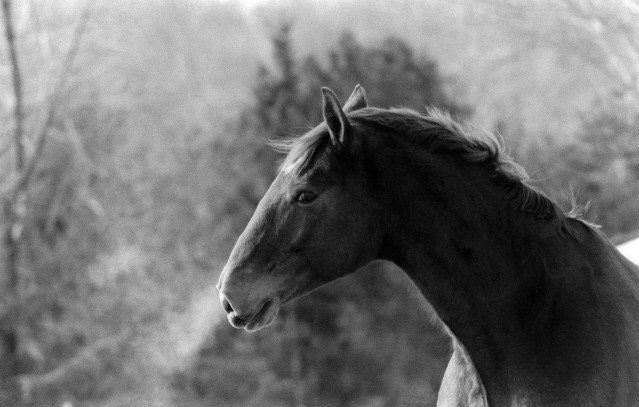
Viloma Pranayama
If you stack four fingers and lay them beneath your navel, then go out to the bikini line, you will find two buttons, these are your psoas nostrils. The transverse abdominis is getting toned in this practice. Put two fingers in your psoas nostrils and push gently whenever you inhale. How hard should you push them? Like pushing the button that turns your computer on. Release when you’re exhaling so you don’t plug them up. When you breathe in, the inhale enters the psoas nostrils.
In the inhale pattern the prana opens and expands. But when you’re breathing in, air comes in through the nose and down the body. Prana is not the same as breathing. Pranayama deals with the energetic body, the subtle body. The exhale is an apanic pattern, it’s like ringing out a towel, or deflating. Pranayama is the practice of bringing together the inhale and the exhale.
If there’s too much prana, if you’re hyper-pranic, search out the apanic end of the exhale, this can ground the breath and bring it back to earth. If you feel your rib cage is pushing forward or lifting away there’s too much prana. You want to keep the ribs contained. You want to keep the top ribs and kidneys floating on the exhale so the heart doesn’t collapse. You can also become hyper apanic, and have a collapsing heart. To keep this from happening have the first and second rib and collar bone looping up and back. The rib cage is not moving with the lungs – we’re keeping the pranic pattern in the exhale, and the apanic pattern in the inhale.
The top of the inhale is the imaginary realm, in that pause you can feel shambhavi mudra, but can also get lost in fairytale castles. Traditional teachers focus on the end of the exhale, on apanic patterns, at the beginning of pranayama practicings, for this reason.
The exhale finishes just in front of the tailbone. You can feel this best by coughing. I like to do this in movie theatres. When you cough you can feel a contraction, and that is the pelvic floor. The home of the exhale is the centre of the pelvic floor. This is mula bhanda, the bonding of attention to the root. The home of the pranic pattern is the centre of the heart.

Tadaka Mudra
tadaka – pool
mudra – seal or gesture
– Performed lying on the back in supine position
– Legs extended, feet together and active
– Palms flat on the floor
– Find the four corners of the belly (two under the ribs, two at the lower part of the abdomen, near the Anterior Superior Iliac Spine
– Inhale all the way up to the top of the lungs
– Exhale until there is no breath left
– In the pause at the end of the exhale, vacuum the four corners in and up toward the heart
– Then inhale from the centre of the belly, inhale smooth inhale
– The abdominal wall creates a vacuum, which is very strong. If you over vacuum it is not good for your nervous system, and your inhale will sound very loud
– When you inhale at the end of Tadaka Mudra it is as if there was a spring under the lake right in the centre in your navel that fills the pool up smoothly and it fills the banks of the lake equally along the whole circumference of the lake

Viloma Pranayama
Viloma means cutting the thread of the breath, we’re cutting the grain of the breath into pieces. Vishama vrittis are unequal inhales. Sama vrittis are equal inhales. As we release the soft palette we’re releasing the suboccipitals which can only happen if the eyes are relaxed and settled.
Basic Kumbhaka
The centre of the palm is hollow, like the roof of the mouth, and the armpits. The eyelids are closed. At the end of the exhale we arrive at the middle of the pelvic floor, citta follows the end of the exhale and is held in the pot (kumbhaka) there. No one wants to stay at the end of the exhale, the attention span doesn’t like to be held in the pelvic floor. This is where most feelings that don’t have language are held. The gutter of the body.

